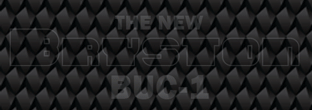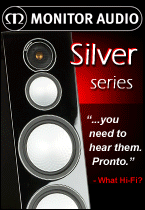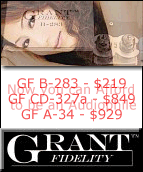
High fidelity stereo performance from an affordable and compact system? Many audiophiles would turn up their noses. The average person would call it a bluff. Most people assume that a high fidelity stereo experience requires big, heavy, expensive equipment.
But, are all boxers heavyweights? No. And like boxing, hifi has a range of divisions.
We decided to go twelve rounds with TEAC’s AG-H300mkIII stereo receiver ($369) and PD-H300mkIII CD player ($289) - a light weight 1-2 combo.
Side by side, the two units take up as much room as a standard-size stereo component, about 17 inches. Stacked on top of each other, their height is only 8 inches. These diminutive components from TEAC’s Reference line-up weigh in at 15 lbs - a fly-weight contender in the CANADA HiFi squared circle.
The styling of both components is classic black with white markings. The layout and labelling of the controls are absolutely intuitive. My grandmother would have no trouble operating this unit.
The AG-H300mkIII stereo receiver is a straight forward, no nonsense little unit. 35 watt left and right hooks give it a modest amount of power at 8 ohms. The dot-matrix LCD display, which is bright and easy to read, is flanked by two large knobs. The right knob controls the volume. The left is for input selection. Both have smooth action with the input selector sliding into a groove each time one of the six inputs is selected (tape, CD-R/MD, CD, tuner, phono, aux). The phono stage is a welcome bonus. The tape and CD-R/MD inputs also have corresponding recording outputs. There are three other smaller rotary dials below the display. The bass and treble dials each have a range of +/- 10 dB. The third dial is for balance adjustment. There is also a mini headphone jack.
The tuner section deserves special mention. I expected it to have trouble pulling in a couple of community radio stations that I regularly listen to, but it tuned them in without any trouble at all. Overall, FM reception was steady and crisp, a pleasant surprise from an integrated receiver of this size and price.
The PD-H300mkIII CD player is also straight forward to operate. It has both an analogue RCA and a digital output. There are also two remote outputs that can be connected to the AG-H300mkII receiver with the included cable. This allows the receiver to automatically power on and start playback of the CD player.
The AG-H300mkII stereo receiver offers plenty of connection flexibility. The Tape and CD-R/MD inputs can be used to connect any line level device such as a TV, DVD player, gaming console or iPod. The speaker binding posts accept bare wire, spades or banana plugs.
TEAC offers two speaker models (LS-H250BL for $239 and LS-H255BL for $199) to complement the Reference Series. There are two other products in the Reference Series: the DR-H300 integrated DVD receiver and the CR-H227i-B integrated CD component with an included iPod dock.
I used this TEAC combo to break in a review pair of the Chorus 706V bookshelf speakers from Focal JMlab. I figured I’d tune in to Jazz.FM and see to the business of making some dinner. Right away I was drawn to a new found clarity and smoothness in Amanda Martinez’s voice, which projected beautifully through the room. From the kitchen it sounded like she was hosting her Saturday afternoon show (Café Latino) right from my living room (well, almost).
The CD player’s performance was startlingly good. Quality had not been compromised by size. The detail extracted from well recorded CDs approached that of the more expensive Cambridge Azure 540C that I used for comparison. I used a variety of CDs, including instrumental and vocal jazz, pop, rock and eletronica. The PD-H300mkIII gave great insight into the differences in the sound engineering of each CD.
What the TEAC has that the Cambridge doesn’t, is MP3 playback capability. MP3 CDs loaded quickly and the dot-matrix display gave all sorts of info. Unlike with most other CD players with MP3 playback, browsing through folders and files was a breeze on the PD-H300mkIII. Playback of the current track was maintained while browsing other songs - an awesome feature. The display cycles through, time, file name, song title, artist name, album name, year and comment. I would like to emphasize the legibility of the dot-matrix display of both components, even from a fair distance.
The AG-H300mkIII had a slightly laid back sound. I didn’t expect its 35 watts per channel to deliver enough juice for clear reference level audio, but it did! The soundstage was wide and the tonal balance was on point.
The only area where I was left wanting a little more from this system was in the coherence of the middle of the soundstage. I would have liked a little more prominence and separation of the instruments in certain situations - a minor quibble in the grand scheme of things.
Overall the TEAC system sounded quite neutral. The CD player lacked a bit of air and the 706V bookshelves showed better imaging when paired with the Cambridge Azur components.
The TEAC combo can be a more-than-satisfying bedroom or office unit for an audiophile. It might not deliver the knock out punch of a main system, but it’s an entertaining under-card partner For the uninitiated, the PD-H300MmkII and the AG- H300mkII CD and receiver combo will open up their ears like no mini “hifi” system from a big box store ever could. Compared to other mini systems, these components provide substantially improved performance and flexibility, for a couple hundred dollars more. This TEAC system is perfect for tiny apartments and condos that many bachelors live in. In the end the TEAC components are true contenders in the lightweight audio arena.
Of course they had a fantastic sparring partner. The $700 Focal JMlab Chorus 706V bookshelf speakers are preceded by the great reputation of one of Europe’s largest speaker manufacturers. I’ve always maintained that bookshelves in the $800 price range are the sweet spot of high fidelity audio performance. As far as I’m concerned, it’s the neighbourhood in which the price, size and performance curves are closest to each other, representing the best value.
With a 6-1/2 inch mid-bass woofer and a 1 inch tweeter enclosed in a cabinet that’s 15-3/8 by 8-3/4 by 11-9/16 inches, each bookshelf delivers a frequency response of 55 Hz-28 kHz.
And performance? My first impressions where formed with the TEAC components. With a rated sensitivity of 90 dB, these speakers were no trouble to drive. The speakers sounded fantastic and coached all they could from that setup. After roughly 300 hours (!) of recommended break in, I connected them to a Cambridge Audio Azur 540A integrated amp and a 540C CD player.
Immediately, the imaging tightened up and delivered the coherence and tightness that was missing earlier. The wide soundstage was still there but now the height was floor to ceiling and noticeably wider. The room filling sound didn’t appear to be coming from bookshelves, but a much larger speaker indeed.
Many speakers have highly detailed highs and upper midrange. A lot of the time this equates to bright or forward sound. While this is a characteristic some audiophiles crave for critical listening, it can be fatiguing. Not so with the inverted aluminium-magnesium composite tweeter of the 706V’s. The detail and clarity was all there and maintained its pleasantness through extended listening periods. I’ve become an immediate fan of this tweeter.
What I particularly like about bookshelves of this size are the midrange and bass performance possibilities. Focal JMlab got it right on the money. The bass was well defined and just deep enough that a subwoofer should not be missed when listening to music. Meanwhile, the midrange was smooth and natural. Female voices sounded with the fullness of real female voices. The 706V’s certainly let me appreciate the differences from Nina Simone, to Etta James, to Amy Winehouse to Joss Stone. On her latest album Nelly Furtado did not sound like herself. She sounded like an over produced pop singer, but that’s not the speakers’ fault.
The musicianship on Miles Davis’ Kind of Blue album was palpable. The subtle changes in the pitch of the bass were part of the performance instead of part of the speakers’ struggle. I could visualize the force with which Bill Evans was pressing the piano keys and Jimmy Cobb was striking the drum kit. Speaking of drums, the cymbal decay was excellent and natural.
The finish of the speakers is called “Amati” not the sexiest ever but classy nonetheless. You’ll want to keep the speaker grills off. The V shape at the top gives the speakers a bit of Trekkie look. Taking the grills off reveals a front port. This eliminates the problems associated with placing rear ported speakers too close to the wall. I used the speakers about two feet from the back wall, seven feet apart and toed in slightly.
I loved everything about the Focal JMlab Chorus 706Vs except for one thing: the speaker construction results in a tiny ridge where the side walls meet the front baffle and runs all the way around. It’s a minor quibble, but I’m used to seeing mitred joints and I had to pick on something. Overall, I highly recommend the Focal JMlab Chorus 706Vs to anyone looking for reasonably priced, high performance bookshelf speakers.
Manufacturer:
TEAC
www.teac.com
905-890-8008
AG-H300mkIII Stereo Receiver
Price: $299 CAD
PD-H300mkIII CD Player
Price: $229 CAD
Manufacturer:
Focal JMlab
www.focal.tm.fr
Distributed in Canada by Plurison (1-866-271-5689)
Chorus 706V Bookshelf Speakers
Price: $700 CAD
Click here to discuss this article on the CANADA HiFi Forum














